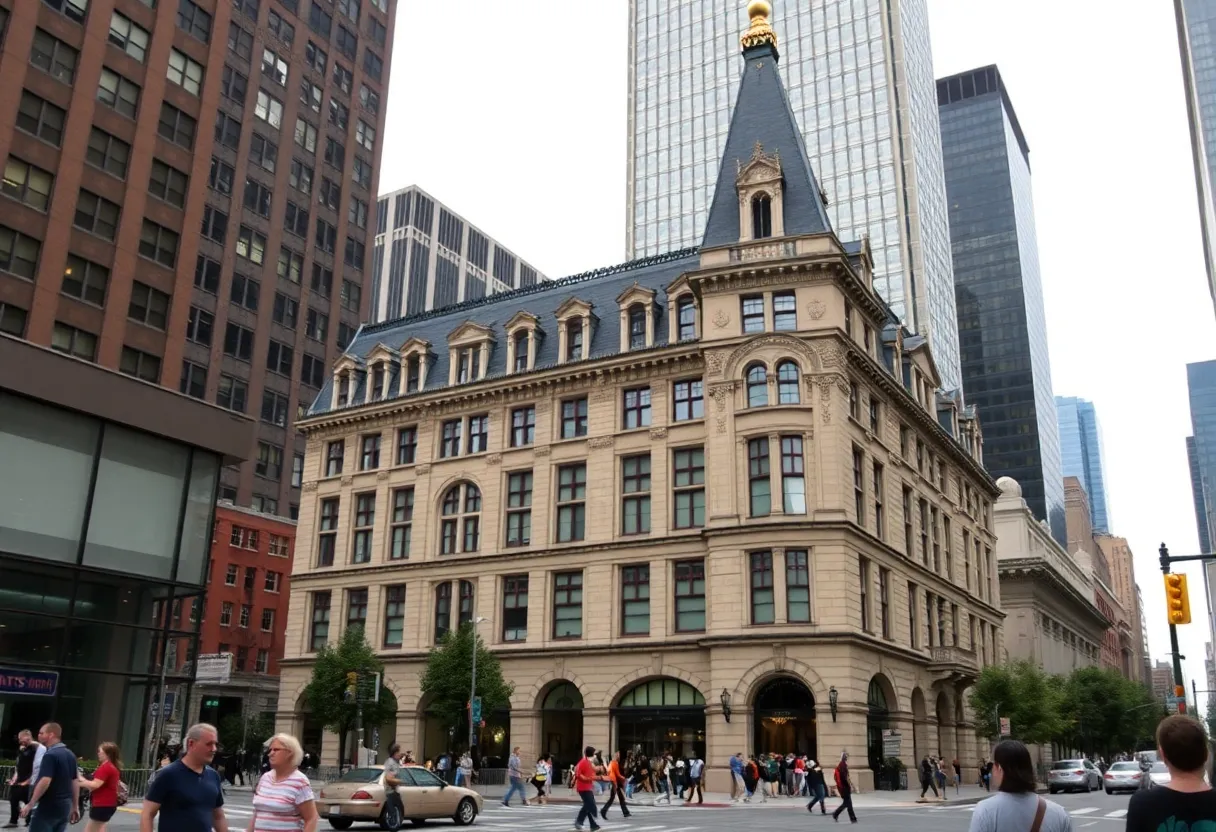News Summary
Georgia State University is facing significant opposition for its plan to demolish a historic building at 148 Edgewood Avenue in Atlanta. Built in 1926, the structure is part of the Martin Luther King Jr. Landmark District and is eligible for the National Register of Historic Places. Local preservationists and community members are voicing their concerns about the potential loss of architectural heritage and are advocating for the building’s preservation. With grassroots support growing, alternatives to demolition are being proposed amidst ongoing debates about urban university responsibilities.
Georgia State University Aims to Demolish Historic Building at 148 Edgewood Ave, Faces Backlash
In the heart of Atlanta, a spirited debate is brewing around a beloved historic building at 148 Edgewood Avenue. Georgia State University (GSU) has unveiled plans to demolish this significant structure, originally constructed in 1926, to make way for a new “Fraternity and Sorority Life Plaza.” However, the proposal has ignited a passionate outcry from preservation advocates who argue that tearing down this architectural gem could harm not only its charm but also the vibes of the entire Martin Luther King Jr. Landmark District.
A Brief History
This isn’t GSU’s first encounter with preservation enthusiasts. Back in 2014, the university attempted to tear down the historic Bell buildings to use the space for parking. Luckily, the community rallied together for a “Save the Bell Buildings” campaign, which ultimately enjoyed tremendous success. Instead of demolition, GSU opted for a renovation plan, transforming the Bell buildings into the headquarters for the National Institute for Student Success, all funded partly by a generous $15 million grant from the Robert W. Woodruff Foundation.
Fast forward to today, and GSU is once again at a crossroads. The building at 148 Edgewood, esteemed for its historical significance, has been recognized as a contributing structure to the Martin Luther King Jr. Landmark District since 1989. In fact, it was included in the national preservation district in 1992, suggesting its importance goes beyond just bricks and mortar.
The Preservationists Step Up
As the plans for demolition unfold, local preservationists are stepping up to voice their concerns. The Georgia State Historic Preservation Division recently determined that 148 Edgewood is eligible for the National Register of Historic Places as of June 2024. This qualification adds a solid layer of protection, highlighting the urgency for a well-thought-out approach to the proposed demolition.
During GSU’s Campus Historic Preservation Plan in 2014, officials described 148 Edgewood as “worthy of long-term preservation and investment,” indicating the institution’s own understanding of its importance. Given this background, preservation advocates are scratching their heads, questioning why GSU would suddenly want to pursue demolishing a structure that’s been tagged as “highly valued” by the university itself.
Community Voices Join the Chorus
Wright Mitchell from the Georgia Trust for Historic Preservation has also expressed strong disapproval of GSU’s latest demolition plan. After all, the building is in good shape, and many believe it hasn’t received proper consideration for adaptive reuse. Kyle Kessler, another historic preservationist, asserts that 148 Edgewood holds stronger preservation claims than the Bell buildings because of its dual local and national designations.
In response to the demolition plans, a petition has been launched on MoveOn.org, and it has already garnered over 1,170 signatures from individuals keen on preserving this historic site. This outpouring of grassroots support displays how deeply residents care about maintaining their historical identities.
The Stakes Are High
What’s at stake here is more than just one building. Demolishing 148 Edgewood risks jeopardizing the integrity of the entire national King historic district, which has already lost a staggering 47% of its area to new development. David Mitchell from the Atlanta Preservation Center has warned that erasing contributing buildings not only diminishes the neighborhood’s heritage but could also alter the collective identity that the district represents.
Alternatives on the Table
Both David Mitchell and Kessler suggest that GSU should explore alternative options, such as utilizing existing vacant properties or surface parking lots for the Fraternity and Sorority Life Plaza instead of sacrificing this treasured building. Such decisions could pave the way for modern needs without losing a piece of Atlanta’s history.
What’s Next?
Recently, GSU held a public presentation regarding its plans, which raised eyebrows among locals who felt it didn’t uphold standards necessary for a public hearing before demolition approval. As it stands, GSU could proceed with the demolition, though concerns linger, especially since the building is state-owned.
This unfolding situation serves as a reminder that urban universities like GSU carry the responsibility to enhance their neighborhoods’ reputations and contribute positively to Atlanta’s physical environment. The earlier success in preserving the Bell buildings stands as a hopeful example, proving that GSU has the capability to blend historical preservation with contemporary urban needs.
Deeper Dive: News & Info About This Topic
HERE Resources
Community Outrage as Georgia State University Plans to Demolish Historic Building
Atlanta’s Historic Treasures Unveiled with Dendrochronology
Historic Sites in Atlanta at Risk of Destruction
Atlanta’s Suburban Office Space Faces Uncertain Future
Additional Resources
- Saporta Report: Save 148 Edgewood for History’s Sake
- Wikipedia: Historic Preservation in the United States
- Neuse News: Cormya Baker Named to the Spring 2025 Dean’s List at Georgia State University
- Google Search: Georgia State University historic buildings
- Broadway World: Georgia State University’s Perimeter College Hosting Playmaking For Girls
- Encyclopedia Britannica: Martin Luther King Jr.
Author: STAFF HERE ATLANTA WRITER
The ATLANTA STAFF WRITER represents the experienced team at HEREAtlanta.com, your go-to source for actionable local news and information in Atlanta, Fulton County, and beyond. Specializing in "news you can use," we cover essential topics like product reviews for personal and business needs, local business directories, politics, real estate trends, neighborhood insights, and state news affecting the area—with deep expertise drawn from years of dedicated reporting and strong community input, including local press releases and business updates. We deliver top reporting on high-value events such as vibrant music festivals like Shaky Knees and Music Midtown, major cultural celebrations including Dragon Con and the Atlanta Film Festival, and iconic sporting events like the Peachtree Road Race. Our coverage extends to key organizations like the Metro Atlanta Chamber of Commerce and the Atlanta Convention & Visitors Bureau, plus leading businesses in logistics, beverages, and retail that power the local economy such as Delta Air Lines, The Coca-Cola Company, and The Home Depot. As part of the broader HERE network, including HEREAugusta.com and HERESavannah.com, we provide comprehensive, credible insights into Georgia's dynamic landscape.





